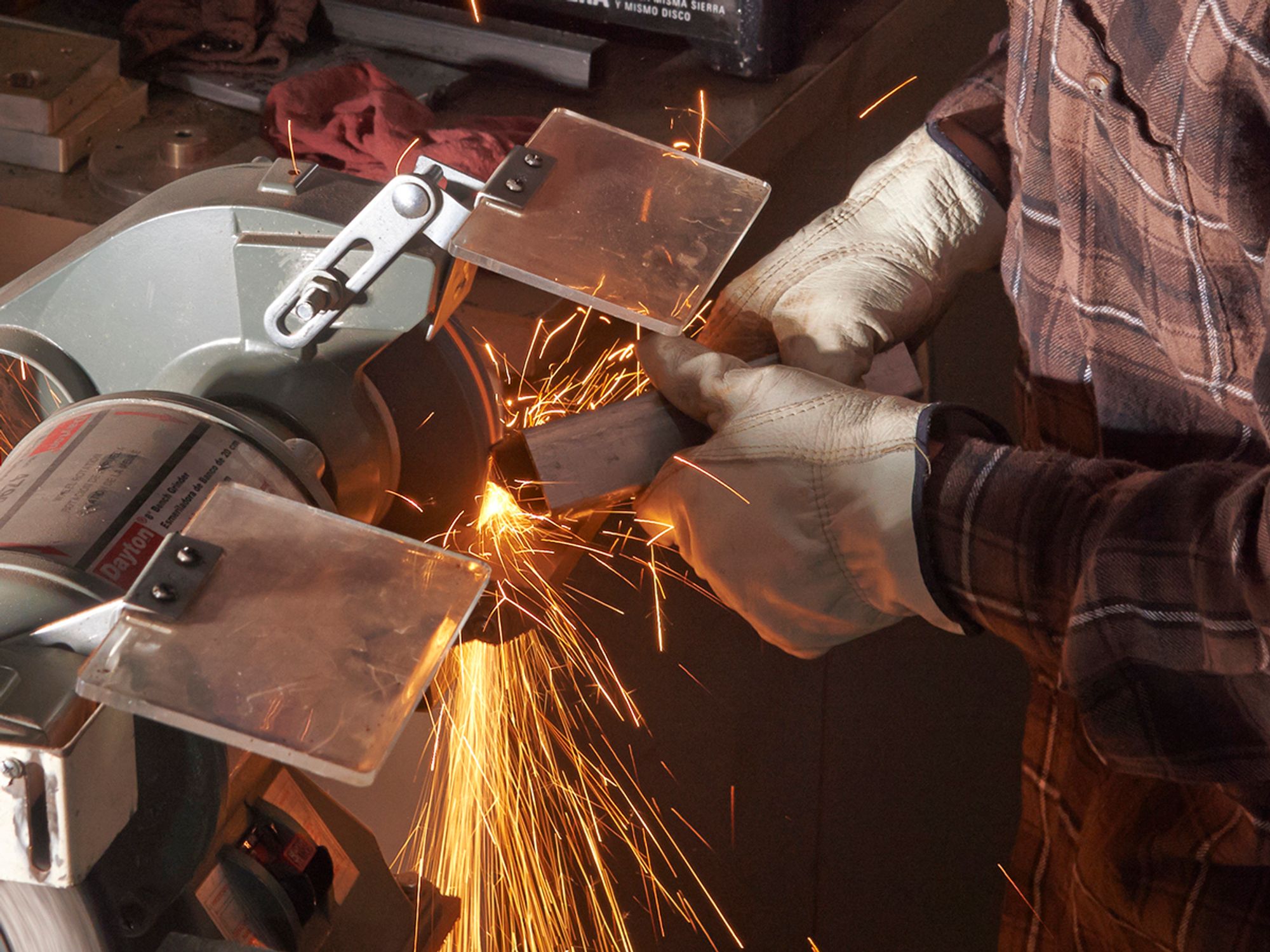What are the OSHA requirements for grinding machines?

- On grinding machines, the point of operation, nip points, and other moving parts all require adequate safeguarding.
- Employees must follow abrasive wheel guidelines and be trained in other safe work procedures.
Grinding machines primarily alter the size, shape, and surface finish of metal by placing a workpiece against a rotating abrasive surface or wheel. Grinding machines may also be used for grinding glass, ceramics, plastics, and rubber. Many of the hazards posed by grinders, such as flying fragments, sparks, and air contaminants, are the same hazards posed by cutting wheels, polishing wheels, and wire buffing wheels. But grinders also pose several unique hazards: abrasive wheels can shatter; a rotating wheel, flange, or spindle end may be exposed; and the convergence of a rotating wheel and a work rest creates a natural nip point.
Safety requirements for grinding machines
The Occupational Safety and Health Administration (OSHA) requires all employers with grinding machines to:
- Ensure all abrasive wheel machines are adequately guarded;
- Use abrasive discs and wheels that are correctly rated for each grinder’s maximum operating spindle speed (the rating is marked on the disc or wheel in surface feet per minute);
- Ensure side guards cover the spindle, nut, and flange, as well as 75 percent of the wheel diameter;
- Install guards over power belts and drives;
- Develop and implement safe work procedures for grinding machine operations;
- Ensure the work rest is used and kept adjusted to within one-eighth of an inch (0.3175 cm) of the wheel;
- Ensure the adjustable tongue guard on the top side of the grinder is used and kept to within one-fourth of an inch (0.6350 cm) of the wheel;
- Instruct workers to ring-test and visually inspect new abrasive wheels before the wheels are mounted;
- Prohibit employees from wearing gloves, jewelry, or loose-fitting clothing while operating grinding machines and ensure employees secure long hair in a net or cap; and
- Ensure that all servicing and maintenance is performed under an energy control program in accordance with 29 CFR 1910.147, “The control of hazardous energy (lockout/tagout).
